How to Get Better SEO Results: The Complete Guide

Wondering how to get better SEO results? You’re not alone!
Search engine optimization (SEO) is at the core of how brands attract customers online today. Almost every online experience is starting with search, and if you can’t get a spot-on page one of your target SERPs, you’re pretty much invisible to your audience.
The challenge is that just about every brand is trying to do the same, leaving most marketers wondering how they can get their brand and content to stand out.
That’s what we’re going to cover in this guide. We’ll walk through a quick refresher on SEO — what it is, why it matters, and its benefits — and then we’ll dive into 12 ways you can start earning better SEO results right away. These are tactics that go beyond standard keyword use and algorithm alignment.
They’ll help you dig deeper into what your audience really wants from your content and refine your strategy to give them the best experience possible.
Let’s get started.
Quick Takeaways
- More than a quarter of search engine users click on the first SERP result, and almost none click through past page one.
- SEO drives more organic traffic, higher brand authority, lower costs, and an elevated customer experience.
- Keyword positioning is placing your keywords in strategic places on your blog pages, and it can help you earn higher rankings.
- Google’s related keywords and suggested search features help marketers uncover potential new SEO content ideas.
- Refreshing old content can be a huge driver of new leads and views for your site.
- Technical SEO factors like metadata and site structure make your site more crawlable for Google and other search engines.
- Ultimately, your SEO content should always center first and foremost around your human audience.
SEO 101: A Refresher on the Basics
SEO is the process of building websites and crafting content to maximize rankings potential on search engine results pages (SERPs). High visibility on SERPs drives organic (unpaid) traffic to your website and builds brand awareness with your target audiences. The higher you rank, the larger the share of your audience that sees your brand.
In fact, research shows that more than a quarter (28.7%) click the very first search result they see. The percentages decrease from there, with only 2.5% clicking the 10th-ranked result and an even smaller percentage clicking to page two.
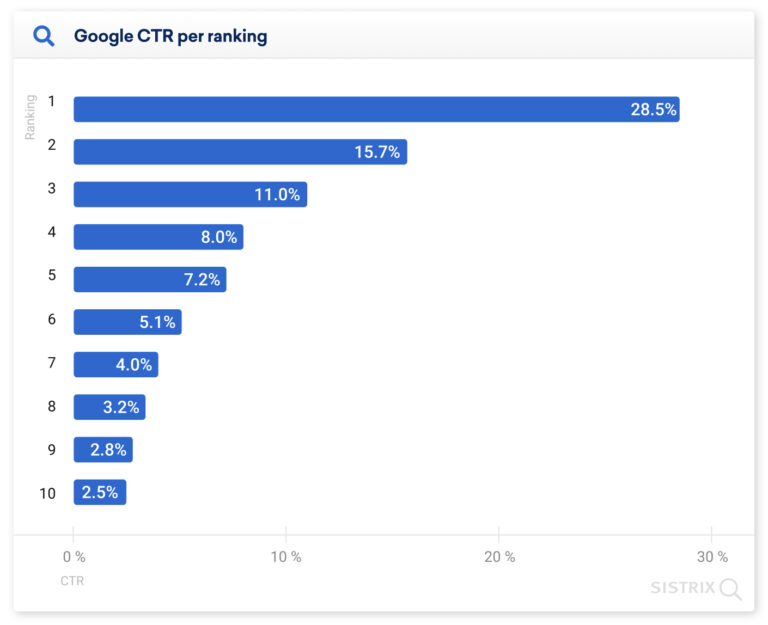
Image Source: Search Engine Journal
Brands that rank on page one have a huge advantage over those with lower (or no) rankings.
Core SEO tactics — keywords and link building, for example — are central to every SEO strategy and have stood the test of time. But the exact way to implement them evolves alongside Google ranking factors, which change all the time as Google updates their algorithm (which they do thousands of times every year).
That means SEO is like a living, breathing part of your larger digital marketing strategy. It can never be stagnant, and it requires continual attention and updating. But the ROI on a successful SEO strategy is undeniable.
Let’s look at 12 specific benefits brands experience when they execute SEO well.
Benefits of an SEO Strategy
More organic traffic
More than 90% of every online experience today begins with a search engine. When you use SEO to earn higher rankings, you can expect more organic traffic to follow. Users prefer organic search results to paid ones — even when paid ads appear at the top — because the content they provide is typically higher-value and more relevant to their needs.
Higher brand authority
Think about topics you search for on a regular basis. Are there certain brands that come to mind? Brands that you consistently see on SERPs for related searches? You probably consider those brands to be experts on the topic.
This is thanks to their SEO strategy. When your brand and your content are consistently visible on SERPs related to important industry topics, you establish a reputation for having expertise among both users and peers.
Cost savings
SEO does have some costs — writers and keyword research tools, for example — but is far and away more cost effective than other marketing strategies. Content marketing is commonly cited to be more than 60% more cost effective than traditional marketing (and generates 3x more leads!). Even better, you can easily scale it up as you grow, spending only on the resources you need to execute at any given time.
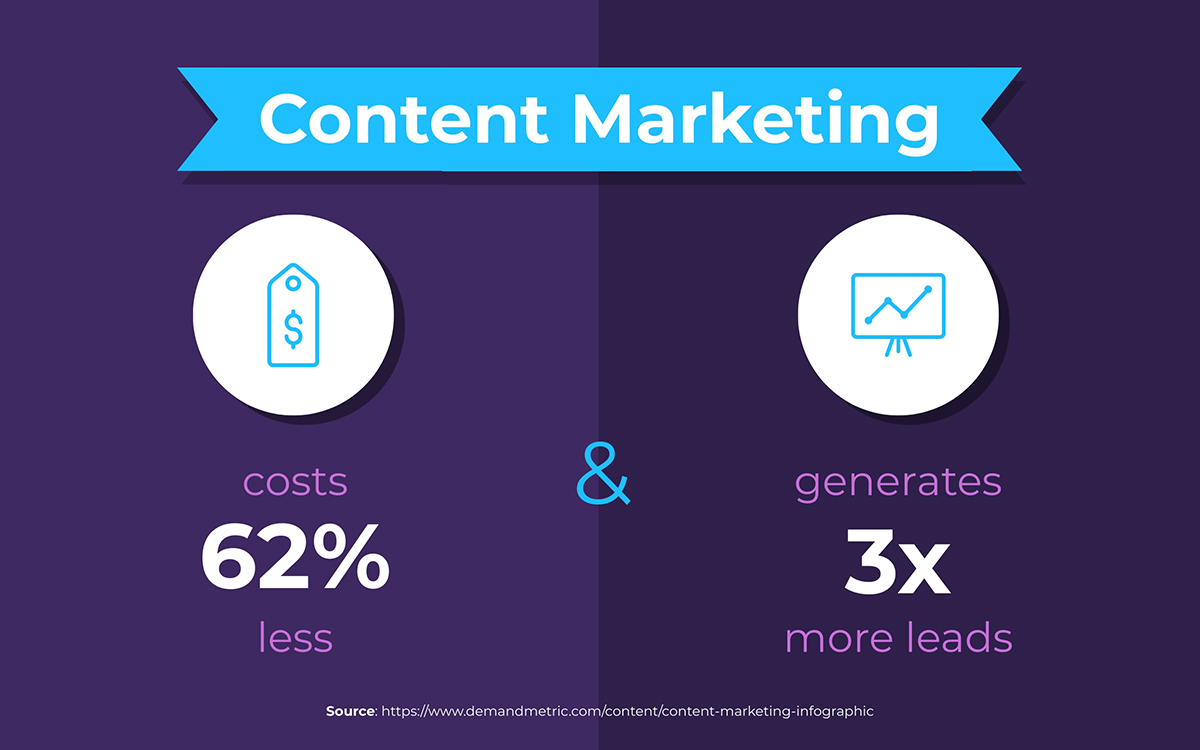
Image Source: Visme
24/7 brand promotion
Google SERPs are open every hour of the day, and SEO ensures your brand is visible to your audience any time they search for topics you can provide value on. While creating content can be time-intensive, there are many times when SEO content provides passive opportunities to attract new customers.
Elevated customer experience
Today, customer relationships begin well before they reach out directly to your brand. A great SEO strategy ensures you have high-value content that represents your brand at every step of the buyer journey.
SEO content demonstrates your brand expertise and value proposition in the absence of direct communication. It ensures the right content gets to the right audiences at the right time. It can help potential customers solve problems or accomplish important tasks, build their trust in your brand, and elevate their overall customer experience from their first visit to your site.
How to Get Better SEO Results: 12 Tips and Tricks
So, we know how effective SEO can be. But there’s still one catch — nearly everyone is doing it. At this point, meeting the SEO status quo is likely not enough to get you really noticed on crowded SERPs. You need to go a step further and integrate savvy SEO tactics that differentiate your content from the rest.
Below, we’ll cover 13 ways to do it.
Use smart keyword positioning
Keywords are the words and phrases used to perform a search on Google or another search engine. Building your SEO content around keywords ensures that it will match with the right audiences — those who are actually looking for your content.
When SEO was first emerging, it was enough to include keywords in your content at high volume and expect results. Today, Google is smarter than that. They want you to use keywords naturally, not just to stuff your article in order to get it ranked.
That’s why you need to think not only about which keywords you use, but where you position them in your content. Always include an exact keyword match in your blog article title, opening paragraph, and section headings. Don’t forget about metadata, like your title tag and URL.
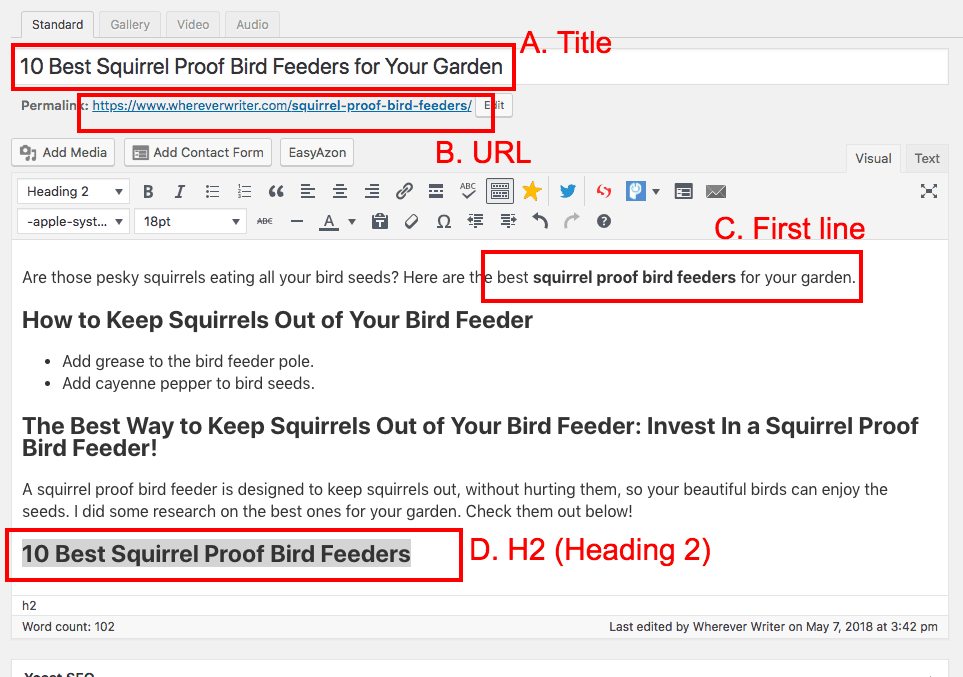
Image Source: The Wherever Writer
Use your keywords around five times for a standard 1000-2000 blog post (don’t go overboard or Google will ding you for keyword stuffing) and spread out its positioning throughout the article.
Add related keywords to your content
Related keywords are similar variations of your target keyword. They’re important because Google looks for them as part of their ranking algorithm, and people use different terms to search for the same topic.
When you use related keywords, your content will rank for a wider range of searches and you’ll capture more traffic.
An easy way to identify related keywords is to actually search for your target keyword on Google, scroll down, and check out the related search terms at the bottom.
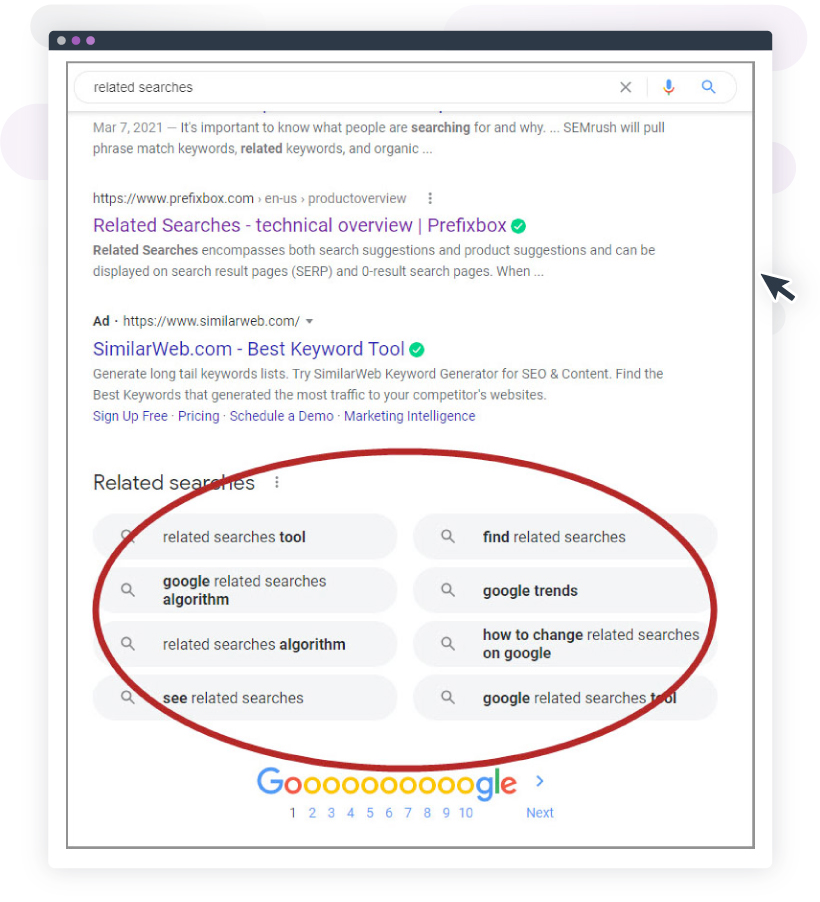
Image Source: ClearVoice
Create backlink-friendly content
You earn backlinks when another website links back to your content. Google uses backlinks as a major part of their SEO ranking algorithm because they’re indicative of brand authority — when other sites share links to yours, it shows they trust and respect your content.
While link building is a long-game strategy (there’s really no fast way to earn them), you can give your strategy a boost by creating content that has a higher chance of being linked elsewhere.
There are certain types of content more likely to be shared in blog articles or on social media, like original research, data visuals (like charts and graphs), infographics, and video content. Creating comprehensive guides to important topics can also earn you more links as brands refer to them as a resource when they mention those topics in related content.
Aim for featured snippets
Featured snippets are excerpts of text that appear at the very top of Google SERPs. They’re often referred to as “position 0” — they appear more prominently than any other content on the page and give users direct answers to questions they ask in search.
While there is no way to guarantee you’ll get the featured snippets for a topic, you can optimize for them by playing to the kind of queries that warrant them. For example, “what is” questions often earn a featured snippet with a definition (like the one below). Beginning your article with clear definitions, providing helpful bullet points, and focusing on highly relevant information are ways to give featured snippets your best shot.
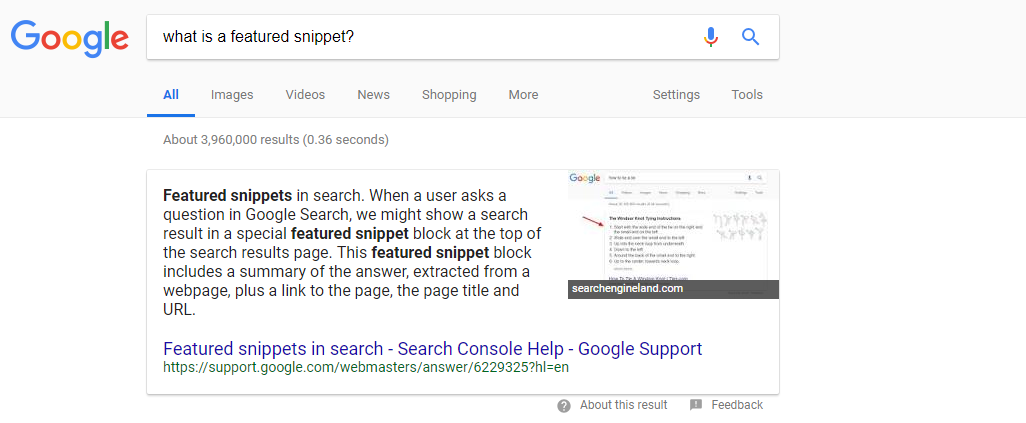
Image Source: Marketing Insider Group
Amplify your content across channels
Google notices when content you publish earns a lot of immediate attention. But how do you get it noticed if you aren’t already ranked? One of the best ways is to amplify your content across your own channels to start driving traffic. Share blog articles and other content you post on social media, in email newsletters, and as featured posts on your website’s home page. Ask your employees to be advocates by sharing content on their own pages.
Social media presents a huge opportunity to get others — external to your company — to share your content, too. People love to share articles and videos about topics they care about to discuss with their own networks. When you amplify your content across channels, you give it a better chance to reach a wide audience (and help it earn better SERP rankings).
Target suggested keywords
Similar to related keywords, you can use Google’s own SERP features to find smart ways to expand your SEO strategy. Whenever you type into the Google search bar, a list of suggested search terms will appear.
Paying attention to those suggested keywords is a really great way to uncover long-tail keyword content opportunities.
For example: a quick search for “content marketing” showed me these suggested keywords, which give me ideas for some industry-specific articles and other more niche content around this broad topic.
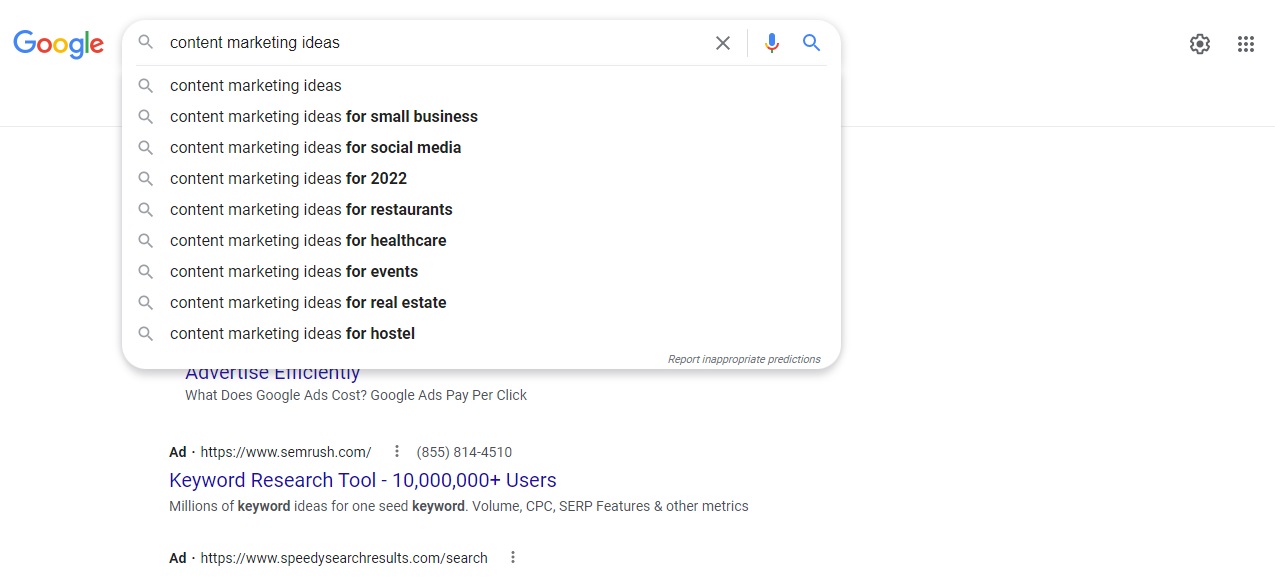
Image Source: Marketing Insider Group
Create skyscraper content
Creating skyscraper content is like a mini competitive analysis for topics within your SEO plan. First, you Google the term you want to rank for. Read the top ranked content for that term, then strategize around how you can create a piece of content that’s even better.
Skyscraper content is a way to climb the rankings without reinventing the wheel, all while you learn more about your competitors and how you can differentiate from them.
Refresh old content frequently
Your old content is a serious treasure trove of SEO opportunities for better rankings. One of the reasons content marketing earns such high ROI compared to other marketing methods is that it earns compounding results over time. Just because something was published months or even years prior doesn’t mean it needs to collect dust on your content shelf.
Dust it off with refreshers like new statistics, updated visuals, and the most new relevant information available on the topic. This tactic has been proven to work — HubSpot doubled their leads generated from old content by updating it periodically. They now earn more than three-quarters of their views and more than 90% of their leads from old posts alone.
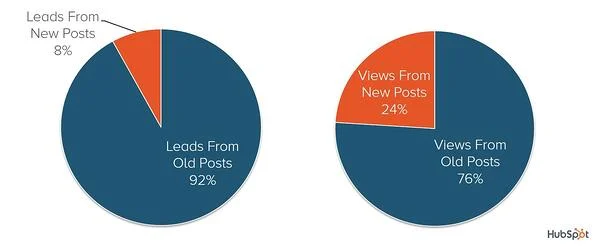
Image Source: HubSpot
Focus on technical SEO
Technical SEO is like the nuts-and-bolts of your larger SEO strategy. It includes things like site structure and metadata — behind–the-scenes factors that make a big difference to Google and earn you better SEO results.
Here are some technical SEO tips:
- Complete your metadata (title tag, meta description, URL, etc.)
- Maintain a clean and intentional site structure
- Be sure your site is indexable and crawlable for search engines
- Make your site mobile-friendly (more than half of traffic is from mobile!)
- Use HTTPs protocols
- Pay attention to site speed and quickly address any issues
Increase time spent on page
Have you ever clicked a SERP result and — in less than a few seconds — clicked back to Google for a different result?
When people do this to your page it’s called pogo sticking, and it can actually hurt your SEO rankings because it tells Google users aren’t finding value in what they find on your site.
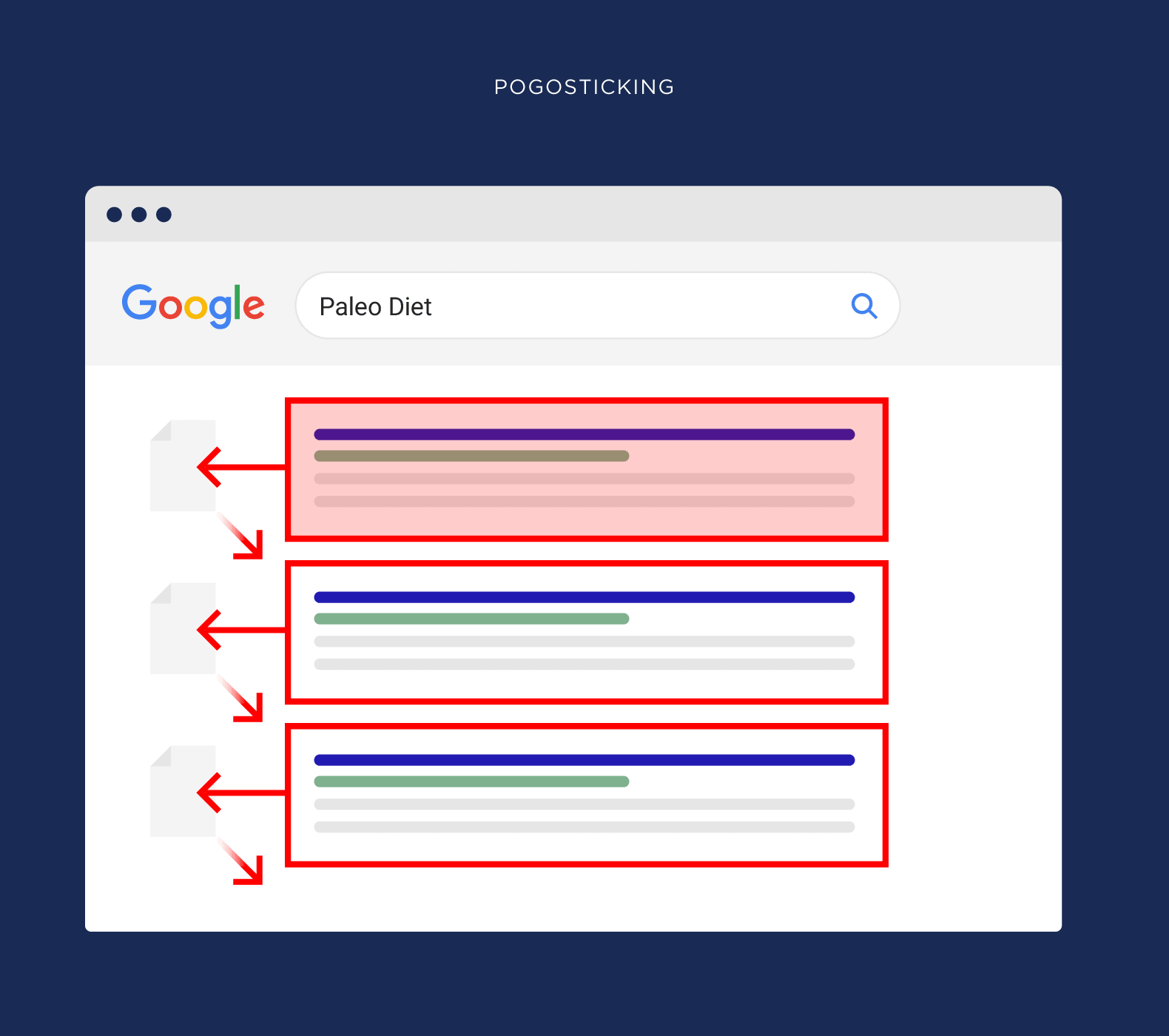
Image Source: Backlinko
While you can’t avoid pogo sticking totally, there are ways to increase your chance of keeping people on your page longer. Make your page design clean and visually appealing. Break up the text on your page and use clear headers and bullet points to make it more digestible. When you make your content easier to read, users can more quickly gather that your content will give them answers.
Keep content human-centered
If there is one thing Google consistently emphasizes above all — no matter how many times it updates the algorithm — it’s that your content should be human-centered first. No matter how many other tactics you use to try to align with ranking factors, you won’t get far if users don’t like your content. Google’s algorithm is smarter than ever and can recognize how valuable their users find your content.
My advice: keep these (and other) tips and tricks in mind for how to get better SEO results, but never implement them at the expense of covering topics your audience cares about in the ways that resonate with them most.
You know your audience best — and you can learn a lot about them as you publish content (more on that next). Keep them as your central focus when you develop content, aiming to add value to them by solving problems, helping them accomplish things, or educating them about topics important to your brand.
Use Google Search Console
Google Search Console is a powerful tool that helps you track your website’s SEO performance. It has tons of reports, troubleshooting tools, analytics insights and more that you can use to continually refine your content strategy.
As it relates strictly to SEO, one of the most useful reports to look for is your performance report. You can see how traffic patterns to your site have changed over time, and you can drill down to find lists of your best and worst performing pages.
Once you’re there, you can drill down even further to check out the keywords you rank for. A last tip for how to get better SEO results: scour that list for keywords you’re already ranking for without knowing it. They’ll be there, and you might be surprised at how users are finding you.
Once you know these keywords, you can be intentional about trying to rank for them and boost your SEO success.
Over to You
Are you ready to boost your SEO results? Every great SEO strategy is built on great content. The team of writers and SEO experts at Marketing Insider Group can deliver you optimized, ready-to-publish content every week for one year (or more!).
Check out our SEO Blog Writing Service or schedule a quick consultation to get started.
The post How to Get Better SEO Results: The Complete Guide appeared first on Marketing Insider Group.




